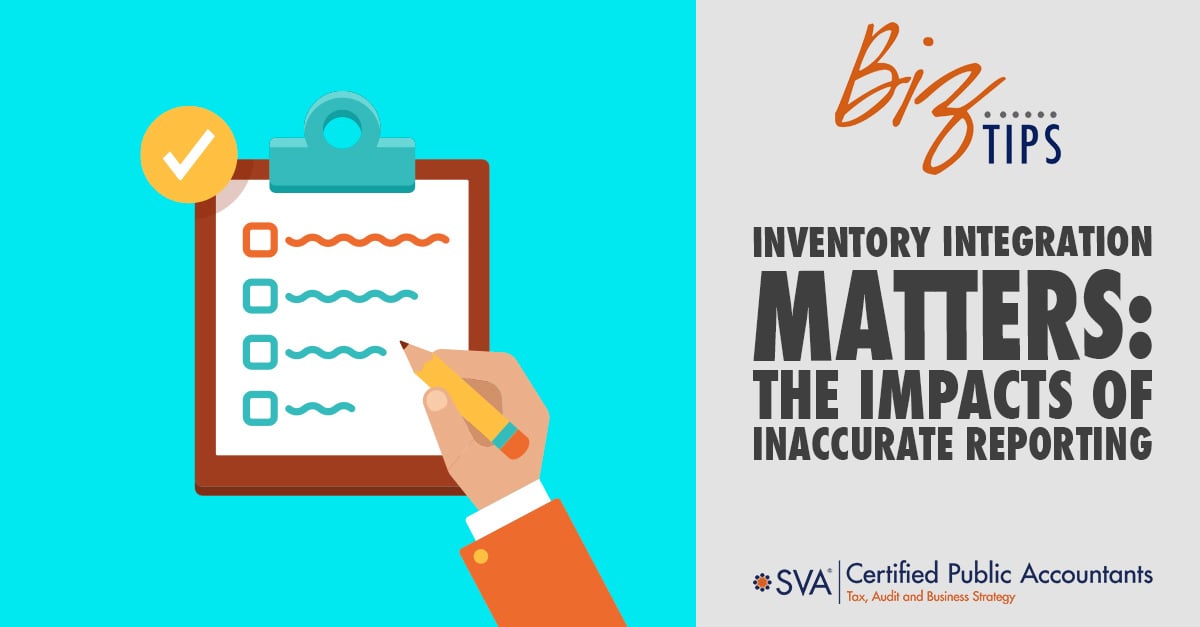| Highlights: |
- Discusses why integrating inventory systems with the general ledger is essential to avoid reconciliation gaps and inaccurate monthly financial reporting.
- Explains common causes of reporting errors, like inventory received but not invoiced, and offers process improvements and system upgrades as solutions.
- Offers practical advice on evaluating systems, maintaining support, and working with advisors to improve inventory accuracy and financial efficiency.
|
Managing your inventory can be complicated if your inventory modules are not integrated with your general ledger. Did you receive inventory but no invoice to enter into your general ledger? Or maybe your inventory has shipped out but hasn’t been invoiced yet?
While this might not seem like a big issue at first glance, it can cause significant problems during monthly reporting. Reconciling inventory to your general ledger must be synced, requiring an integrated system or manual intervention.
The Impacts of Inaccurate Reporting
Cutoff Reconciling Issues
Reporting issues occur when inventory has been invoiced and is showing up in your expenses, but the warehouse hasn’t yet checked the inventory in. Or conversely, if the warehouse checks in the inventory, the invoice has not been entered in the accounts payable system.
If this occurs over month-end, you will need to manually reconcile the inventory to the general ledger to ensure you have accurate reports. An integrated system will alleviate the need for manual adjustments.
Overstating or Understating Your Financial Statements
When inventory reports are not synced, your financial statements will be inaccurate if you don’t manually reconcile each month. This directly affects your margins and bottom-line net income.
Why does it matter? You can’t measure your company's performance if you can’t rely on your financial statement data.
Overestimating or Underestimating Inventory
Overestimating inventory may mean you have excess capital tied up in inventory that won’t be used timely, and you could risk buying too much at inflated prices, which will negatively impact your cost of goods.
Underestimating inventory may lead to the inability to fill orders and meet customer demands.
Recession Implications on Inventory Levels
A recession could create a deflationary period at some level when prices are lowered. During a recession, demand for products reduces and potentially drives costs down. As a result, a business carrying excess inventory could expose itself to additional financial pain.
The excess inventory acquired at a higher cost may need to be liquidated due to a lack of consumer interest. Be cautious about building excess inventory at higher prices. Monitor inventory levels and sales trends closely.
(Download Video Transcript)
Suggestions to Resolve the Issues
Manual Proof of Inventory Reports
If you can’t align the systems, you should prepare a proof of inventory report from your inventory system. This report will be used to create a journal entry so that your ending inventory equals what’s in the inventory system.
This creates a solid monthly process around inventory reconciliation until you can get an integrated system.
Consider a New or Updated System
Analyze your systems and work with an advisor to determine if you need a new system, or if there are add-ons to your existing system they can recommend.
Pay for Support
Keep your support program current so that when issues like this arise, you can get support from your software company. They may have recommendations for add-on systems or modifications to your current software package.
Other Inventory Pitfalls
Understand your inventory turns to make sure you are ordering just enough. The correct inventory turn will depend on your industry, with an average inventory turn of 1-2 months. To calculate inventory turn, take your cost of goods sold divided by the average inventory for the year.
Watch your invoices to make sure shipping costs are reported with the inventory costs. Shipping costs should be allocated to the inventory items purchased. The unsold items in inventory would then include a shipping cost component. This cost would be relieved from inventory as the items are sold thereby properly matching revenue and expenses.
Take the time to talk with an advisor who can review your processes and help you establish the procedures your business needs.
© 2022 SVA Certified Public Accountants

